Is Our Democracy at Risk? Americans Think So. BU Experts Talk about Why—and the Way Forward
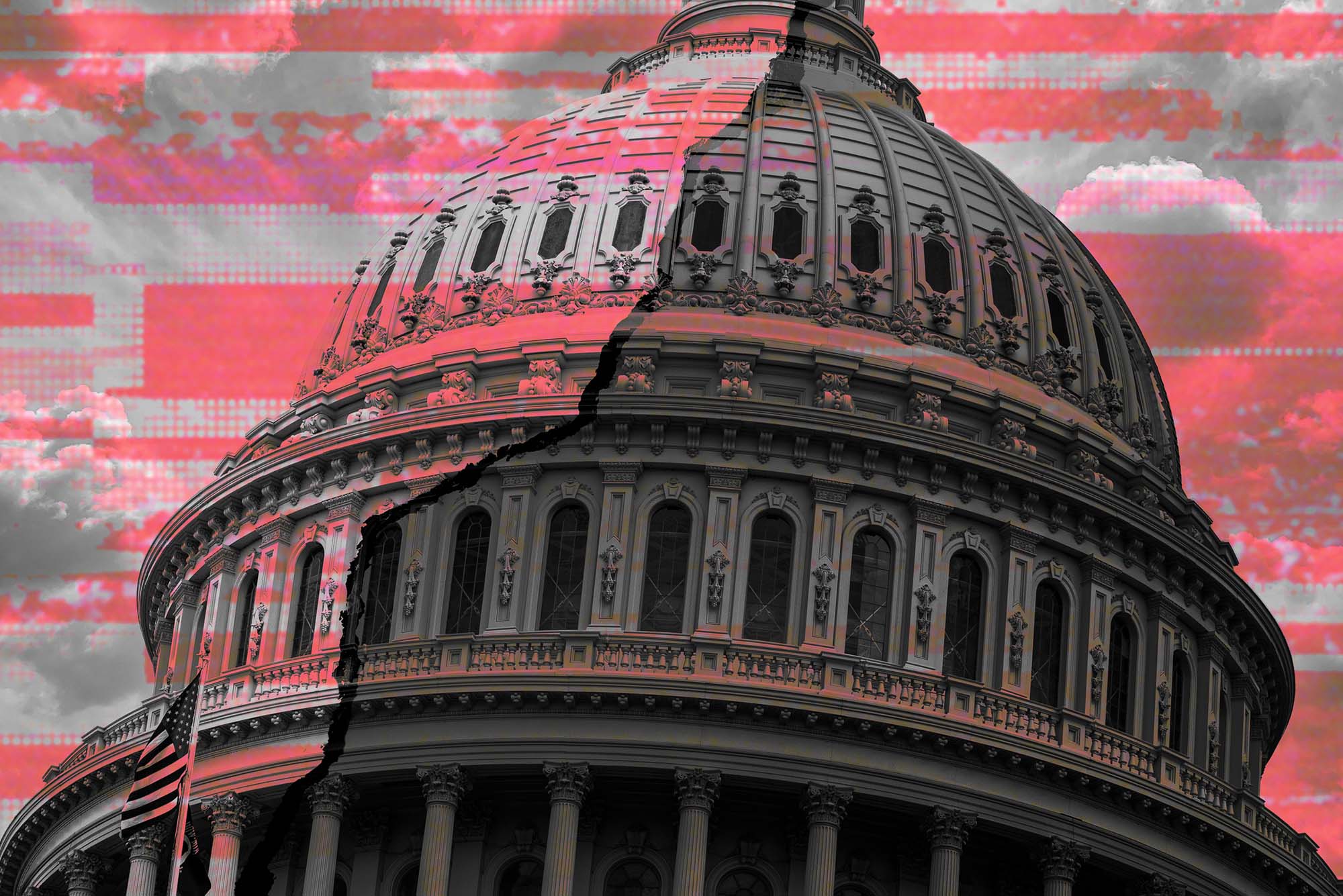
Photo by Douglas Rissing/iStock
Is Our Democracy at Risk?
Americans think so. Faculty experts say electoral reforms, compromise, and a bit of moral outrage might be in order.
With the 2024 presidential election booming, one phrase stands out as a harbinger of uncertain times: democracy at risk. It’s been covered in news, invoked by liberal and conservative pundits and presidential candidates, and fretted over in private.
Surveys show Americans are concerned about the state of democracy. In March 2024, the Georgetown Institute of Politics and Public Service announced its latest bipartisan Battleground Civility Poll: 81 percent of respondents said they believe democracy in America is being threatened. Three months before, an Associated Press-NORC Center for Public Affairs Research poll found 62 percent of adults believe democracy in the US “could be at risk,” depending on which presidential candidate wins this fall. “The poll asked about the importance of the coming presidential election for 12 issues and found that the percentage who said the outcome will be very or extremely important to the future of democracy in the U.S. (67%) ranked behind only the economy (75%),” the AP said in December 2023.
In general, those who see our form of government in decline point to issues like immigration, voter suppression, compromised election integrity, entrenched bipartisanship, rising authoritarian sentiment, and fears about media manipulation.
Bruce Schulman, William E. Huntington Professor of History at the College of Arts & Sciences, puts our present-day grasp of democracy in a historical context. “The [founding fathers] thought of themselves as having created a democratic system, but we have to understand that even our most fundamental ideas of what a democracy entails have changed over time,” he says, noting that two centuries ago, only one-tenth of the population—all white, male landowners—was able to vote.
Since then, our collective notion of the boundaries of democracy have expanded and contracted in different contexts. During and after both World Wars, Schulman says, American citizens saw an increase in “censorship, crackdown on dissent, extraordinary powers taken by the government, and the rise of vigilantism—such as attacks on immigrants or persecution of alleged communists.
“Democratic systems rest on a set of laws and practices—but also on a set of norms and cultural assumptions—that are vulnerable to attack,” which can often manifest “as a hostility to the values of openness, tolerance, inclusion, diversity, and respect for opposing viewpoints.”
At the same time, he says, as we move toward a historic rematch between two controversial presidential candidates, we’re also moving into uncharted waters.
“In our current cycle, every Republican politician is asked if they will accept the results of the election,” Schulman says, “and the fact that this is a question is just plain weird.”
“In our current cycle, every Republican politician is asked if they will accept the results of the election, and the fact that this is a question is just plain weird.”
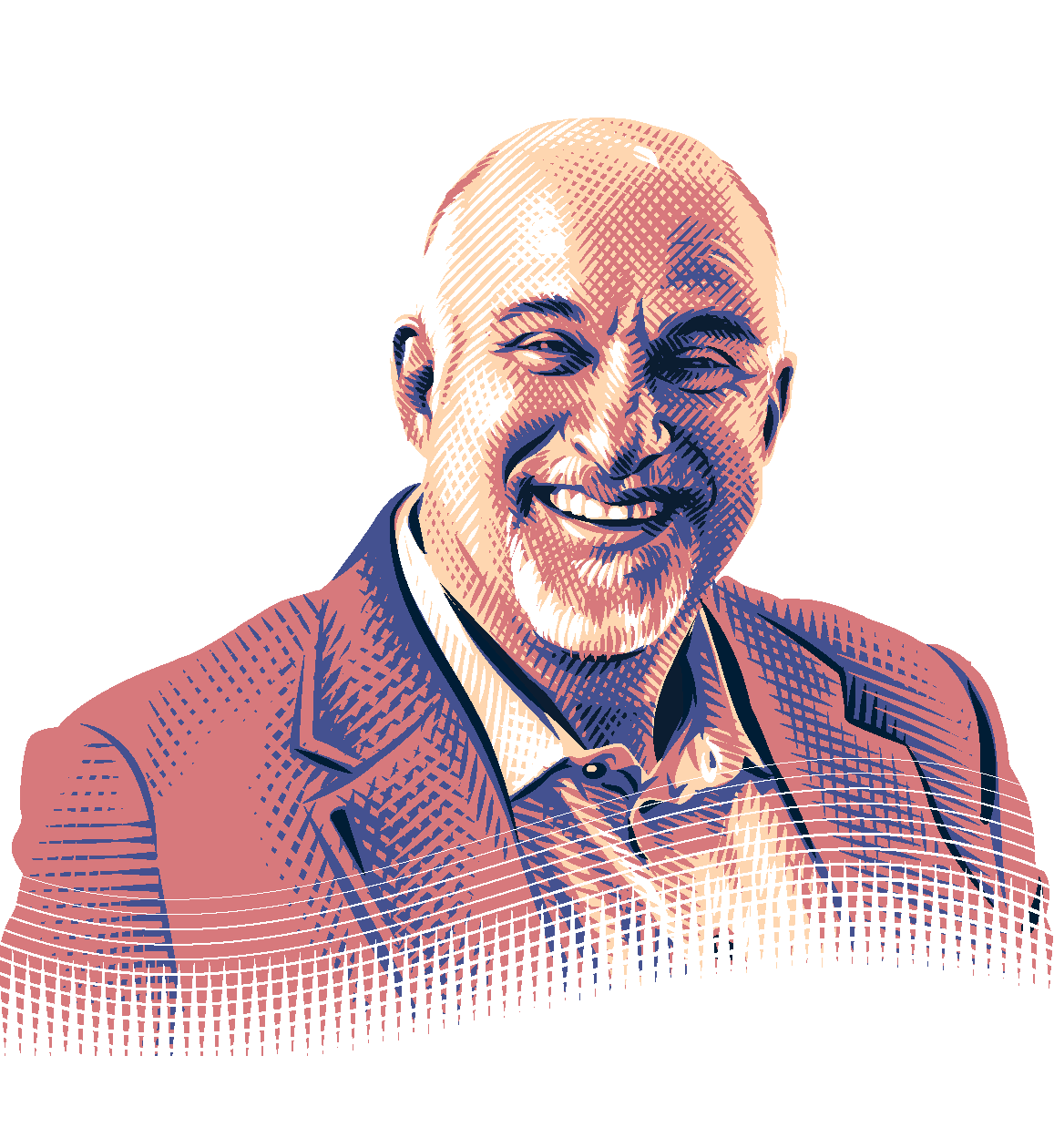
How did we get here? Who is responsible for eroding the public’s trust, and how can we get it back? Bostonia spoke with BU faculty members about some of the issues that may be putting our system of government at risk.
Deepfakes and Denialism
In a recent analysis in the Washington Post, three political scientists wrote about their research on the impact of fake news: “The prospect of sharing false information—spread by individuals and foreign governments—threatens the quality of democracy in America. False and noisy information makes voters more likely to reelect poorly performing governments and lowers public confidence in democracy.”
Joan Donovan, a College of Communication assistant professor, studies misinformation and disinformation in a media environment—the internet and social media—where “alternative facts” and outright falsehoods have reached crisis levels. She believes that citizens have “a human right to the truth.”
Traditional media has its safeguards in the form of fact-checking and gatekeeping, but internet platforms and social media demolish all barriers, Donovan says. Without a stringent regard for factual information, the new media landscape has become rife with conspiracy theories, deepfakes, science denialism, and propaganda, often masquerading as genuine information. A TikTok video circulated in January, for example, featured audio that was AI-generated to sound like President Joe Biden calling for F-15 fighter jets to be sent to the Texas-Mexico border. The audio was deemed a deepfake by the Poynter Institute for Media Studies and other experts.

“Anything that is novel and outrageous is going to circulate further and faster across social media than anything that is fact-based,” Donovan says, “and we don’t have companies at the helm of the information ecosystem that are willing to address these issues head-on.”
Search engine algorithms share the blame, she adds. Algorithms like Google’s prioritize information that’s “fresh and relevant” or trending over information that’s been factually verified. And often, this trending information has an agenda attached to it.
“Not a lot of people are going to wake up every day and remind the internet that the Holocaust happened, but there are a large number of people that are willing to wake up every day and deny the Holocaust,” Donovan says. “If you search for ‘Did the Holocaust happen?’ it shouldn’t be the case that there are two or three new results every other day.”
The people who generate disinformation “have an outsize influence on our culture, on our society, on our politics,” she says. “If they were to call for an insurrection or some kind of coup, they may be able to organize a large enough militia to do so. I know that sounds crazy to think about, but it’s one of the consequences of having technology organized in this way—the people with the largest network are going to exercise more power, potentially more power than politicians.”
If challenges to factual information are a threat to democracy, as some say, aren’t challenges to free speech, even conspiratorial speech, of equal concern? Perhaps, but Donovan is adamant that regulating the internet is not the same thing as curtailing free speech.
“You don’t have more or less free speech because the internet exists—you have the capacity to broadcast it, which is different,” she says. “But the free speech question becomes the major argumentative point that prevents any policy from coming forward.”
You don’t have more or less free speech because the internet exists—you have the capacity to broadcast it, which is different.
What might that policy look like? Donovan calls for an effort to keep a record of all posts made by elected officials—a project she is engaged in at BU—which would hold them to account if they were to promulgate antidemocratic ideas. In terms of broader ideological reforms, she’d like to see the internet function more like a public utility, such as a library, and less like a corporate platform.
“We need to have processes of peer review in order to see more stability in what gets returned when you search for something,” she says. “It’s been capture of communication, and downstream of that is a society that’s much more vulnerable to authoritarianism.”
Political Violence
When Steve Rosenzweig watched the news on January 6, 2021, he was shocked. But he also knew that years of extremist rhetoric on social media was bound to boil over into violent action.
“In hindsight, the writing was on the wall,” says Rosenzweig, a College of Arts & Sciences assistant professor of political science. “I actually wrote an opinion piece in the Boston Globe a couple of months before that, warning that…violence was on the table.”
The Globe piece was eerily prescient: “Barring an indisputable landslide on election night, Trump appears likely to contest the results. He will claim rampant voter fraud. He will demand that the courts and the Justice Department intercede on his behalf. And he will wink and nod at the armed extremists currently occupying the fringe of his base.”
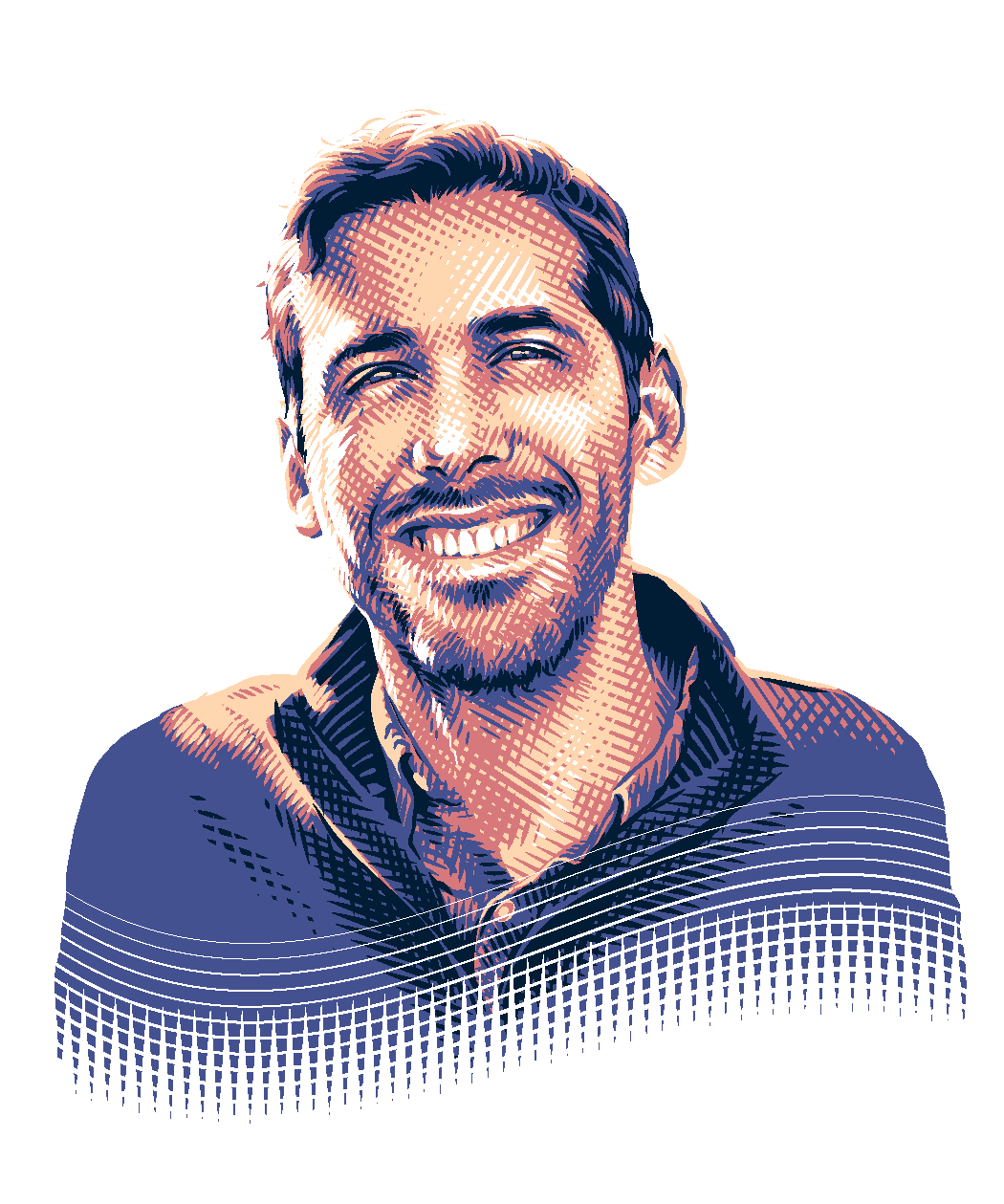
Many will remember that day as an unprecedented show of political violence by a group propelled by the belief—without evidence—that the 2020 presidential election results were illegitimate. Rosenzweig, a scholar of political violence in East African countries, is acutely aware that the US has a history of using brute force to achieve political ends.
The American violence of the 19th and 20th centuries was explicitly racially motivated. Rosenzweig cites the 1965 march on Selma, Ala., where Martin Luther King, Jr. (GRS’55, Hon.’59) and supporters of the Voting Rights Act of 1965 were met with violent opposition, as a prime example.
“The amount of time in which we have a fully democratic system for all people in the US has only really been since the Voting Rights Act at the earliest,” Rosenzweig says. “We sometimes forget that the periods in which we’ve had full multiracial democracy and relatively low levels of political violence are almost an anomaly.”
There are plenty of examples of reversing democratic erosion or backsliding, Rosenzweig says: “In Senegal, there have been presidents who have tried to extend their time in office and were forced to backtrack, and you saw peaceful transitions as a result.
“But violence, once it’s out of the box, is a little more difficult to put back in.”
The key to keeping a society free of political violence, he says: “Every political system has those who might utilize violence in pursuit of their goals. What determines whether violence becomes common or not is the extent to which mainstream politicians endorse it.”
Voter Suppression
In the last few decades, many states have mounted barriers to the ballot box—imposing strict voter ID laws, decreased voting times, and restricted registration. Such measures have deleterious outcomes, with “racial minorities, poor people, and young and old voters” as the primary targets, according to the Brennan Center for Justice at NYU School of Law.
Christine Slaughter, a College of Arts & Sciences assistant professor of political science, researches the voter landscape, probing the psychological reasons certain demographic groups, like Black individuals, do and do not turn out to vote and which candidates they choose.
“There’s a prominent theory of Black political behavior…that demonstrates that Black people believe what happens to the group will have something to do with what happens in their lives,” she says. “Not too many other racial groups have that sense of solidarity that shapes their politics, and looking across the political landscape, we can see that linked fate is a unique attribute for Black voters.”
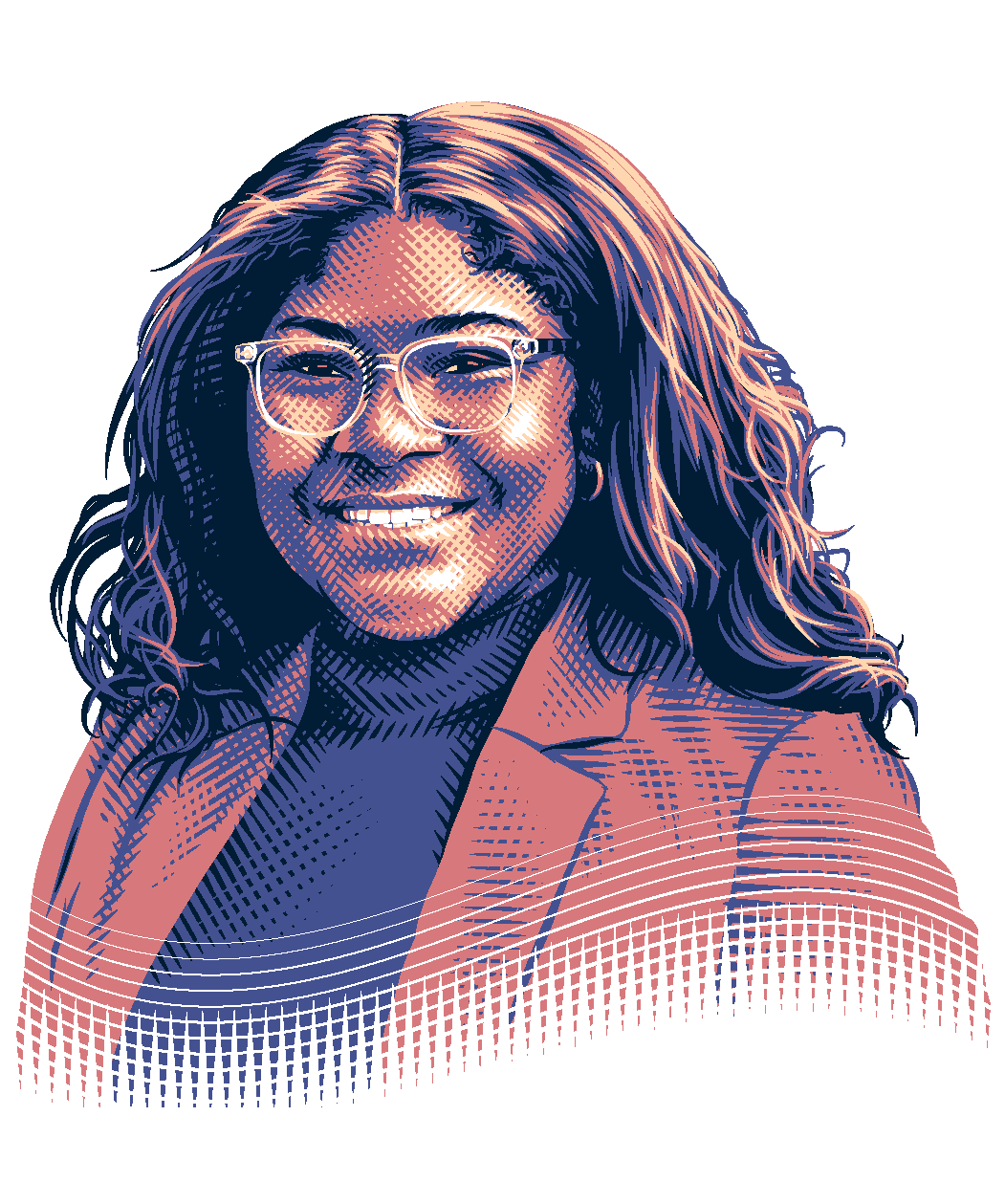
Slaughter’s research finds that Black voters, and Black women in particular, are impelled by a sense of political optimism that sees them well-represented at the ballot box. This optimism was manifested in a decisive turnout during the 2020 presidential election, and some political scientists credit that turnout to Biden’s victory. It was also a year marked by significant attempts to compromise voting integrity, which could likely reemerge in November 2024, Slaughter says.
“In many states, African American voters experience disenfranchisement and vote dilution, which weakens their ability to make an electoral impact,” she says. “And the Democrats have not done much to stand against fraud allegations [made by Republicans], or move quickly to pass a new Voting Rights Act prior to this election, or ensure equal representation.”
In many states, African American voters experience disenfranchisement and vote dilution, which weakens their ability to make an electoral impact.
Reforms to address voter suppression (which frequently targets Black individuals and other voters of color) are steps in the right direction, Slaughter says. “But despite their effectiveness, not all states adopt these reforms,” leaving voters especially vulnerable in states with restrictive voting laws.
She also notes that while electoral reforms to improve voter access and convenience—like online and same-day registration and the elimination of barriers like required photo identification—can be effective in certain areas, “no one reform has a uniform effect across states.” Politics, she adds, always factor into how, where, and when people vote.
“Therefore, several approaches exist to improving voter confidence, and each has some benefits but also some drawbacks,” she says. “Unfortunately, it takes elected officials coming across the aisle in order to implement them [effectively], and in such a polarizing time, that is unlikely to happen.”
Extreme Populism
Vivien Schmidt, Jean Monnet Professor of European Integration and a professor emerita of international relations and political science at the Frederick S. Pardee School of Global Studies, is a scholar of European populism, an ideology she says is characterized by its “us versus them” message, its charismatic messenger, and its ability to create messages that resonate with citizens’ economic, social, and political discontent.
“It’s anti-elite, antiestablishment, and it tends to be angry,” she says. “The discourse can be seen as anti-liberal democracy, because it’s against any kind of intermediary institutions.”
Populism is also often spoken of in the same breath as nationalism, particularly when examining extreme conservative movements, she says. “On the right, national sovereignty has become a major issue, because it’s about identity—it’s about an ideal of identity from the past,” she says. “In the US in particular, it links to white supremacy.”
Far-right populist messaging in Europe and in the US tend to mirror each other, but Schmidt warns of some key differences in scope. For one thing, the European Union continues to act as a checks-and-balances system that prevents antidemocratic movements from taking over the continent.
So, why is right-wing populism so threatening, and why is it happening now?
“In the US, extreme right populism moves toward authoritarianism,” Schmidt explains. “We’re seeing more policymakers and ordinary voters saying they want a strong leader.”
In the US, extreme right populism moves toward authoritarianism.

The movement incubated in the financial crisis of the 2000s and the collapse of American manufacturing, where average Americans went from “good manufacturing jobs to not-good service jobs to the platform economy,” she says. “Why wouldn’t people be angry, and why wouldn’t they worry about being left behind? They look at the politicians to say, ‘You haven’t solved my problem.’”
Schmidt says that regrettably, only in a liberal democracy can citizens campaign for, and ultimately achieve, an autocratic state: “Winston Churchill said that democracy is the worst form of government except for all the other ones. There’s nothing inherent in democracy to save it from the authoritarian drift. In order to make it work, you need consensus, you need compromise, and you need people to talk to one another.”
Citizen Mobilization
It may seem paradoxical, but according to Schulman, now is not the time to double down on the old ways.
“The idea that a constitution would survive for 200 years would never have occurred to the framers,” he says. Democracy must be allowed to evolve. In the beginning of the 20th century, for instance, major progressive reforms, like women’s voting rights, were passed through on-the-ground campaigning, which led to constitutional amendments, he says.
“In the last 60 years, the Constitution has not been amended in any substantial way,” he says. “People have to agree to say, ‘Hey, this isn’t working,’ in order to fix things.”
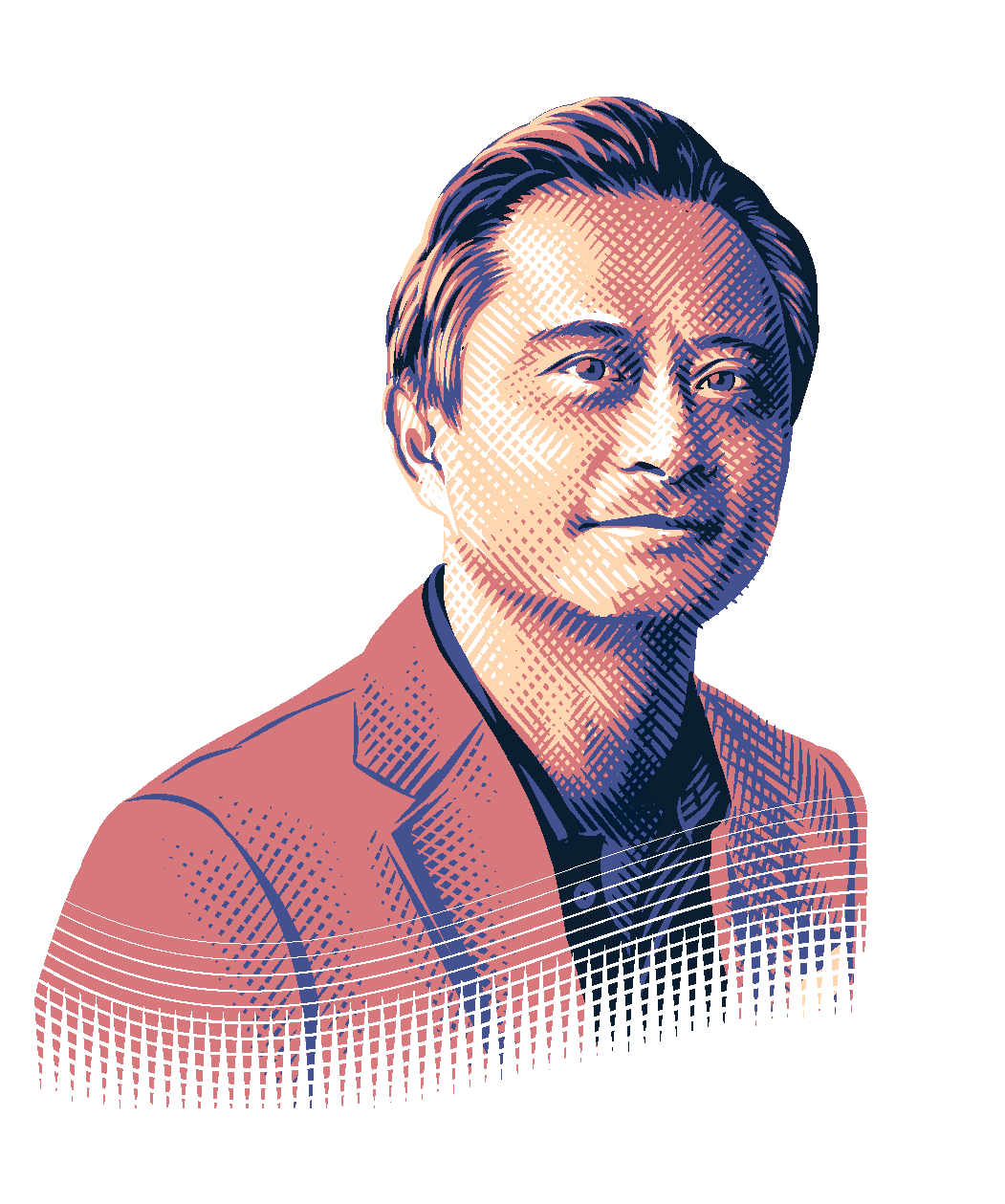
Robert L. Tsai, a School of Law professor of law, Harry Elwood Warren Memorial Scholar, and an expert in constitutional policy, says it’s the power of moral outrage that gets representatives to start listening, changes laws, creates amendments, and determines the success or failure of an initiative.
“You need outrage, particularly in our modern age, when so many things make us feel fairly indifferent to the suffering of others,” he says. “I have faith that if you’re willing to embrace a certain amount of messiness, people will eventually come together.”
But Tsai believes that citizen campaigns should not necessarily be focused on getting amendments passed or achieving favorable Supreme Court rulings. Instead, that energy should be trained on local and state courts.
“I can cite you any number of laws that the Supreme Court basically killed in the cradle decades ago, where lawyers got totally repudiated,” he says. “And those cases get cited now as terrible law. On the other hand, if you look at the states that passed the Equal Rights Amendment [in the 1970s], it was done through citizen mobilization.”
This is not mere theory, Tsai notes. The ideals that are the bedrock of our democracy have come to fruition as the result of citizen efforts in the smaller courts. “Most of us who are living in America believe in democracy—one person, one vote. But most people don’t realize that that principle is not actually written anywhere in the Constitution,” he says. “The only reason the Supreme Court ever even uttered those words is because of the mobilization that went on for generations at the local level, to make state elections more democratic, and more open.”

Comments & Discussion
Boston University moderates comments to facilitate an informed, substantive, civil conversation. Abusive, profane, self-promotional, misleading, incoherent or off-topic comments will be rejected. Moderators are staffed during regular business hours (EST) and can only accept comments written in English. Statistics or facts must include a citation or a link to the citation.